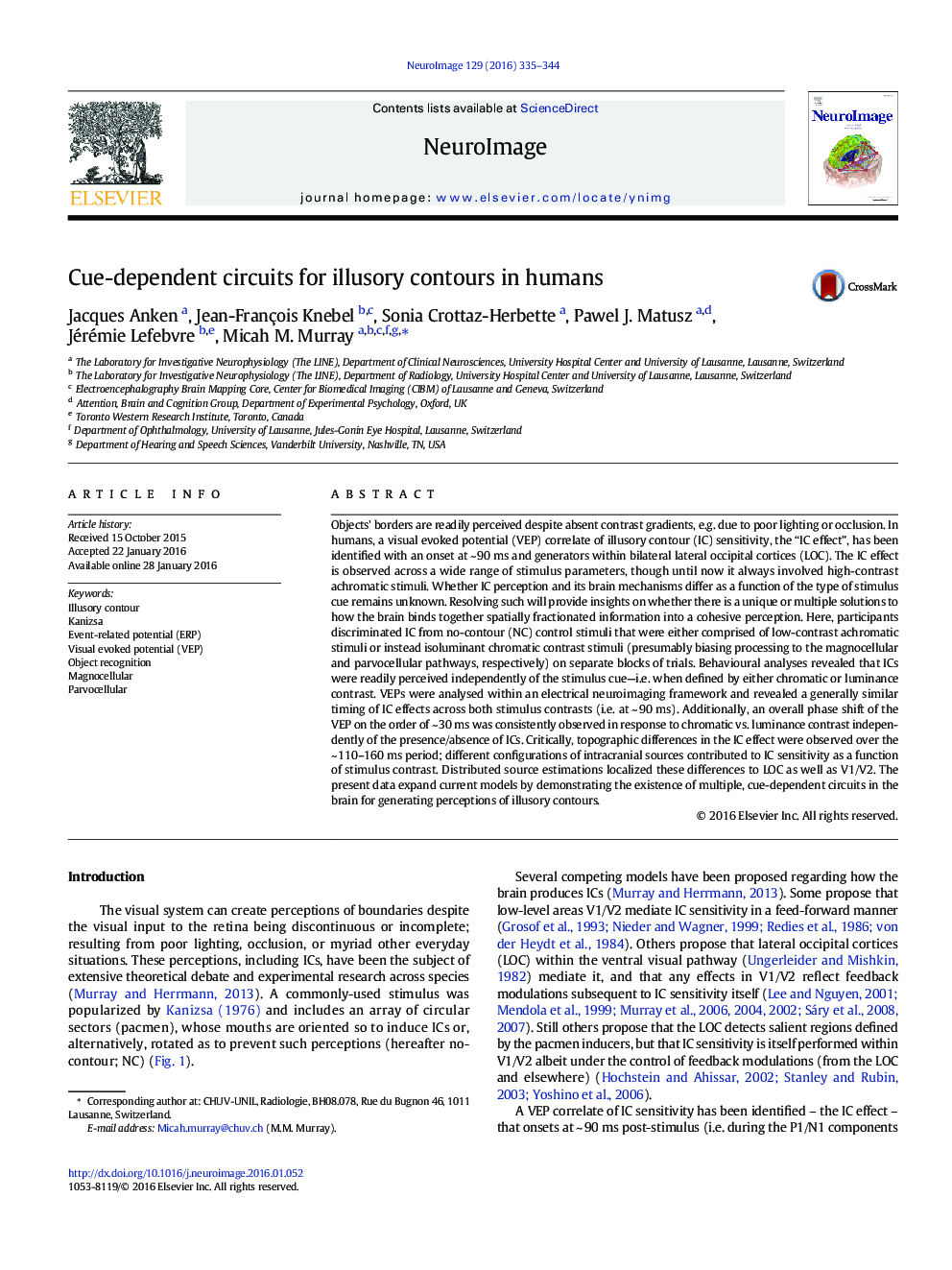| کد مقاله | کد نشریه | سال انتشار | مقاله انگلیسی | نسخه تمام متن |
|---|---|---|---|---|
| 6023967 | 1580879 | 2016 | 10 صفحه PDF | دانلود رایگان |
- Illusory contours (ICs) are borders perceived despite absent contrast gradients.
- We studied if brain mechanisms of IC sensitivity are cue-dependent.
- Cues for ICs were isoluminant chromatic and low-luminance achromatic contrast.
- Robust IC perception was achieved with both contrast types.
- We revealed distinct, cue-dependent brain circuits giving rise to ICs.
Objects' borders are readily perceived despite absent contrast gradients, e.g. due to poor lighting or occlusion. In humans, a visual evoked potential (VEP) correlate of illusory contour (IC) sensitivity, the “IC effect”, has been identified with an onset at ~Â 90Â ms and generators within bilateral lateral occipital cortices (LOC). The IC effect is observed across a wide range of stimulus parameters, though until now it always involved high-contrast achromatic stimuli. Whether IC perception and its brain mechanisms differ as a function of the type of stimulus cue remains unknown. Resolving such will provide insights on whether there is a unique or multiple solutions to how the brain binds together spatially fractionated information into a cohesive perception. Here, participants discriminated IC from no-contour (NC) control stimuli that were either comprised of low-contrast achromatic stimuli or instead isoluminant chromatic contrast stimuli (presumably biasing processing to the magnocellular and parvocellular pathways, respectively) on separate blocks of trials. Behavioural analyses revealed that ICs were readily perceived independently of the stimulus cue-i.e. when defined by either chromatic or luminance contrast. VEPs were analysed within an electrical neuroimaging framework and revealed a generally similar timing of IC effects across both stimulus contrasts (i.e. at ~Â 90Â ms). Additionally, an overall phase shift of the VEP on the order of ~Â 30Â ms was consistently observed in response to chromatic vs. luminance contrast independently of the presence/absence of ICs. Critically, topographic differences in the IC effect were observed over the ~Â 110-160Â ms period; different configurations of intracranial sources contributed to IC sensitivity as a function of stimulus contrast. Distributed source estimations localized these differences to LOC as well as V1/V2. The present data expand current models by demonstrating the existence of multiple, cue-dependent circuits in the brain for generating perceptions of illusory contours.
Journal: NeuroImage - Volume 129, 1 April 2016, Pages 335-344
